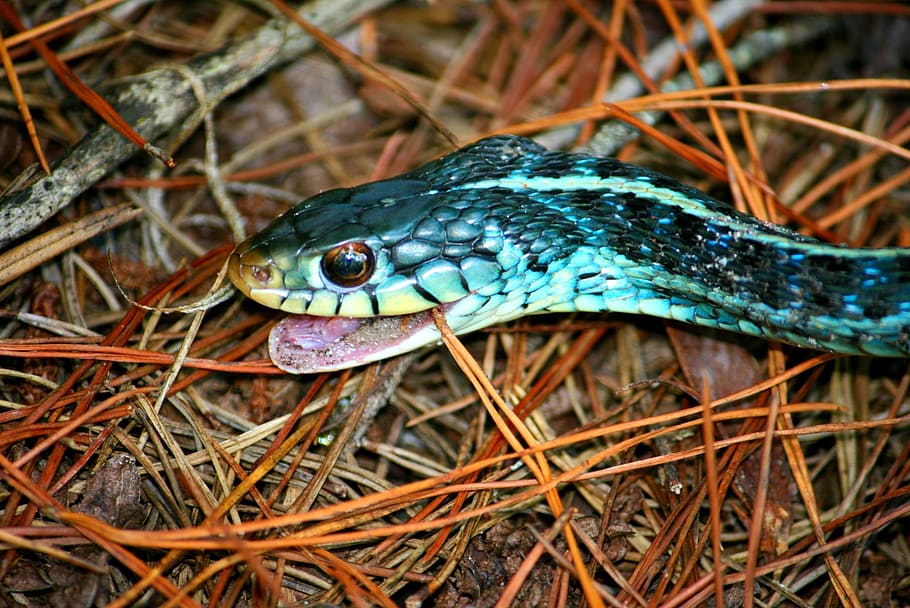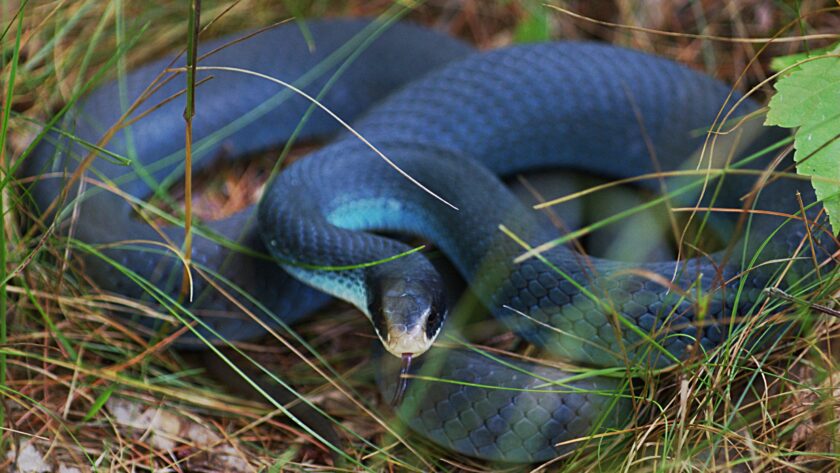Do you ever feel like you’re living in a world of black and white, where everything is just a shade of gray? Well, get ready to meet a creature that will add a burst of color to your life: the blue racer snake. This fascinating species is one of the few blue snakes in the world, and it’s sure to catch your eye with its striking appearance. But don’t let its beauty fool you – this snake is fast and furious, with a flighty and aggressive nature towards humans.
In this article, you’ll learn all about the blue racer snake, from its characteristics and appearance to its habitat and behavior. We’ll also explore the controversy surrounding its popularity as a pet and its endangered status in some parts of North America.
And if you’re considering keeping a blue racer snake as a pet, we’ll provide you with all the information you need to ensure that you can provide the ideal living conditions and care for this unique species.
Are you ready to meet the fast and furious blue racer snake? Let’s dive in!
Table of Contents
Key Takeaways
- Blue racer snakes are one of the few blue snakes in the world and are unique for their coloration and distinctive black mask.
- They are slender and fast-moving, with a high metabolism that allows them to slither up to 4 mph.
- While desired as pets, they are flighty and prone to biting, making them not recommended for new snake keepers. They are also controversial due to their aggression towards humans.
- The wild population is decreasing due to habitat loss, construction, and human activity, and they are endangered in some parts of North America.
Blue Racer Snake: Characteristics and Appearance

You’ll be amazed by the unique blue coloration and distinctive black mask of the blue racer snake. This subspecies of the North American racer stands out among other snakes due to its metallic scales that range from gray-green to bright cyan. Its white underbelly contrasts beautifully with the blue coloration on its body.
Apart from its blue color, the blue racer snake has several unique physical features. It’s slender and fast-moving, with a body that can slither up to four miles per hour. It adapts easily to a wide variety of habitats and climates, making it a versatile species. The blue racer snake is also known for its black mask, which covers its eyes and adds to its striking appearance.
Habitat and Behavior
Exploring the natural habitats of the blue racer reveals their preference for wide open spaces, as they slither with sleek agility through the forests, fields, and marshes of North America, often sharing burrows with other species. They are adaptable snakes, able to thrive in a wide range of climates and habitats, from the Great Lakes to the Gulf of Mexico. The blue racer’s natural habitat diversity is a testament to their resilience and survival instincts.
However, the wild population of the blue racer snake is dwindling due to habitat loss, construction, and human activity. As human development encroaches on their natural habitat, the blue racer is forced to compete with humans for space, resources, and prey. In some areas, the blue racer is endangered, with their populations under threat in the rest of their range. It is important to take action to preserve the blue racer’s natural habitat and ensure their survival for future generations.
Blue Racer Snake Captive Care and Concerns
If you’re considering keeping a blue racer as a pet, it’s important to understand the potential risks and challenges associated with their care. While they may be desired for their unique blue coloration and fast-moving nature, they’re not recommended for new snake keepers due to their flighty and prone to biting behavior.
Additionally, their aggression towards humans has made them a controversial pet choice. If you do decide to keep a blue racer as a pet, it is recommended to find a captive-bred individual rather than a wild-caught one. Captive breeding can help decrease the impact on their already decreasing wild population.
However, it’s also important to consider the ethical considerations of keeping a potentially endangered species as a pet. It’s up to the potential owner to assess whether or not the appeal of owning this unique animal is worth the harm to their population.
Proper husbandry and care, including a large terrarium with proper lighting and substrate, access to clean water, and a proper diet of mice, can help ensure a healthy and happy blue racer in captivity.
Frequently Asked Questions
Are there any specific laws or regulations regarding owning a Blue Racer Snake as a pet?
Owning a blue racer snake as a pet may have legal implications and ethical considerations. Some states require permits or prohibit ownership altogether. Captive-bred options are preferred to protect the wild population.
How do Blue Racer Snakes interact with other animals in the wild?
Blue racer snakes play an important ecological role as predators, feeding on a variety of prey including insects, birds, small mammals, amphibians, lizards, and other snakes. They share burrows with other species and hibernate with other snakes, indicating a level of social interaction in the wild. Predator prey dynamics are essential for maintaining a healthy ecosystem.
Can Blue Racer Snakes be trained or domesticated?
Blue racer snakes cannot be trained or domesticated due to their flighty and aggressive nature. Behavior modification techniques may be used to reduce aggression, but they are not recommended for new snake keepers.
What is the lifespan of a Blue Racer Snake in captivity compared to the wild?
In captivity, blue racer snakes can live slightly longer than their wild counterparts, with a lifespan of up to 12 years. However, environmental factors such as poor husbandry and dirty bedding can cause health issues that may shorten their lifespan.
Are there any specific health concerns or diseases that Blue Racer Snakes are prone to?
Blue racer snakes may suffer from fungal diseases, parasites, and bacterial diseases caused by poor snake care. It’s important to provide clean bedding and constant access to clean water to prevent health concerns.
Conclusion
Congratulations! You’ve just learned about the fast and furious blue racer snake. These snakes are truly fascinating creatures, with their unique blue color and lightning-fast speed. However, they’re not recommended for novice snake keepers due to their aggressive nature towards humans.
If you’re an experienced snake keeper and are interested in caring for a blue racer snake, it’s important to provide them with a spacious enclosure and a diet of rodents and other small animals. Remember to always handle them with caution and respect their natural instincts.
Some may argue that keeping blue racer snakes as pets is unethical due to their endangered status in some parts of North America. While it’s important to preserve their natural habitats and protect them from harm, responsible captive breeding can help ensure the survival of the species. As long as owners are educated and committed to providing proper care, owning a blue racer snake can be a rewarding experience.
In conclusion, the blue racer snake is a unique and fascinating species that requires experienced care and respect. While controversy may surround their popularity as pets, responsible ownership can help ensure their survival while allowing us to appreciate their beauty and speed.


